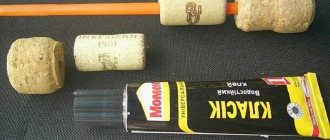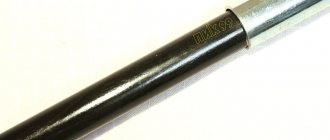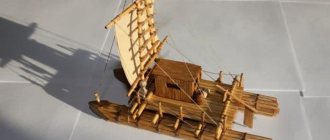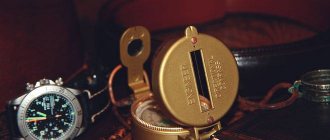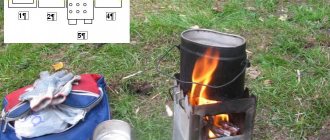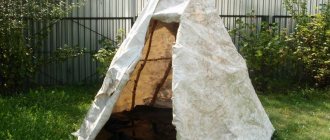29.04.2019
A raincoat tent is a special camping equipment made of thick fabric. Its main feature is its versatility, allowing it to be used on any type of hike. The equipment is suitable for use as outer protective clothing, as well as for the construction of various types of shelters with its help. The use of a thick tarpaulin allows the product not to be afraid of scratches and hot coals from a fire, which often damage expensive multi-person tents for tourists.
The history of the creation of the first models
Long-brimmed outerwear became the progenitor of the epancha of the early 18th century
Specialized clothing, vaguely reminiscent of modern raincoats, appeared in the Russian army during the time of Peter I. These were epanches, used to protect soldiers from rain and wind. In 1761 they received collars in the form of hoods. Starting from the second half of the 19th century, such things, combining the advantages of several items, became part of military equipment in many European countries. The Russian Empire included raincoats in the equipment of its officers only in 1894; these models were waterproof.
In Soviet times, European and tsarist experience was adopted only in 1936, securing tents as standard equipment for the rank and file and command staff of the Workers 'and Peasants' Red Army. The standard set of protective raincoats included:
- Panel size 180x180 cm;
- The stand is collapsible, consisting of two 65 cm rods;
- Lacing rope;
- Two jokes.
During the Great Patriotic War, soldiers immediately appreciated the best aspects of compact tents, using them for all sorts of needs:
- Weather protection;
- Use as camouflage ammunition;
- Carrying wounded soldiers.
On guard duty, such equipment was used as ordinary capes, and in open areas, soldiers often built large shelters, connecting several panels together. Entrances to dugouts were also often masked with raincoats. Beginning in 1942, the defense industry of the Soviet Union began to produce camouflage models with improved camouflage properties.
Oxford fabric 210D.
This material is used for the production of all kinds of tourist accessories, various types of light uniforms for fishermen and hunters, for the production of light workwear, uniforms for employees of law enforcement agencies and various departmental organizations, in shoe production and the manufacture of haberdashery items, for the production of all kinds of equipment, life jackets, small covers, waterproof raincoats and other products.

On the long side of the hammock there is a pocket, also known as a cover for the hammock, as well as a hood if you use the hammock as a raincoat.
Description of the classic raincoat
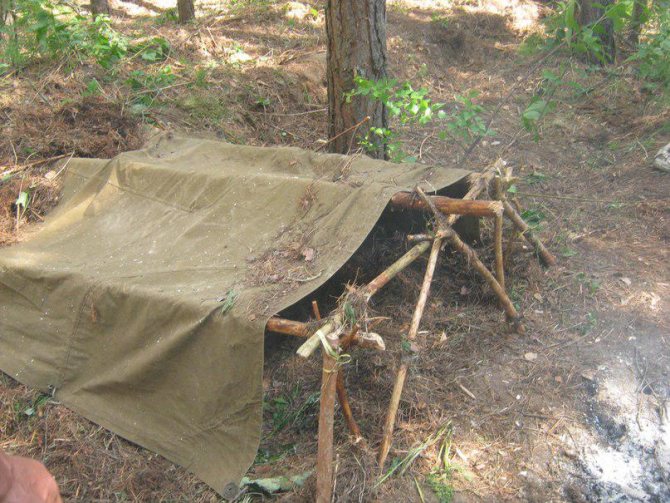
This way the entrances to the dugout are covered, although it is not necessary to build a complex wooden frame
The standard Soviet raincoat tent is a canvas product with eyelets at the corners designed for stretching, securing and installing the canvas on stakes. There are loops on two sides of the tarpaulin, and buttons on the opposite two sides. These accessories are needed to connect several panels into one large one, which is done in the shortest possible time. With enough material, you can build a shelter for an entire company of soldiers with your own hands. During World War II, Soviet and German soldiers did this. By the way, German models were more comfortable due to their triangular shape.
The cloak has sewn ropes; with their help, a hood was quickly constructed or a necessary item was attached near the neck. To ensure that the long corner of the tent, worn as outerwear, does not drag on the ground, it is fastened higher using a special button.
Currently, in tourist stores you can find a variety of modern models, many of them have a convenient zipper, but none of them can be compared in reliability with a soldier's raincoat.
Popular models
A lot of time has passed since the appearance of the first hammock and its improvement to a hanging tent. From year to year, the product was brought to perfection, “overgrown” with all sorts of needs (the most famous manufacturers of tourist equipment took care of this). And today the variety of high-quality hammocks-tents that amaze with their technical characteristics is amazing.
The simplest, standard design does not need a detailed description. This is a basic version with fastening loops and ropes on both sides.
Now popular models that have received the maximum number of accolades.
With crossbar
A hammock tent with a crossbar is designed for two people. Here you will sit with maximum comfort and will not pile on each other. An unsafe model that overturns when the position of vacationers changes or a gust of wind.
DIY making
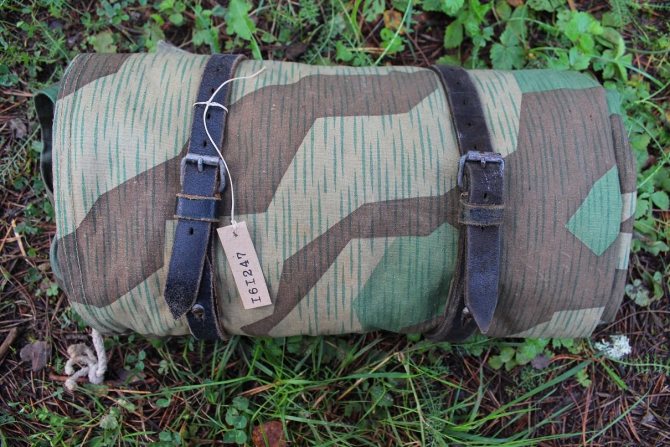
With its small dimensions, the raincoat can be easily placed even in a small hiking backpack
Some tourists and travelers try to make a raincoat tent with their own hands, which is quite simple to do:
- Take a piece of thick tarpaulin;
- Can be cut to size 180 by 180 cm or any desired size;
- The fabric can be treated with special water-repellent materials;
- For the hood, special lacing ropes with a diameter of no more than 5 mm with winding at the ends are used;
- The stands are made of wood or steel wire with a diameter of 4 mm.
Although you can make such a raincoat tent in a few evenings, it will not turn out very neat, and you will have to spend a lot of time searching for the necessary materials, so it is easier to buy a ready-made product.
A factory-made cape will weigh only 1.5 kg, and its price fluctuates around 400-600 rubles. It folds up and easily hides in a backpack. Some craftsmen make enlarged versions of the product, claiming that with their help you can shelter several people from bad weather at once, but it’s easier to connect several standard soldier’s tents together, because that’s exactly what they are designed for.
How can you make a complete shelter from bad weather from a raincoat?
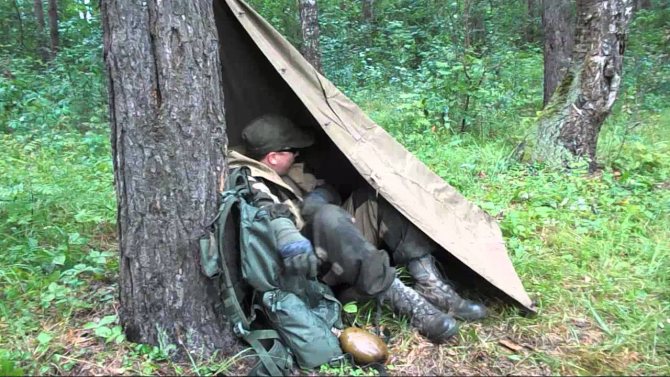
The simplest shelter can be made in 10-15 minutes
A raincoat tent can be installed in a variety of ways, depending on how many people are trying to hide under it and how many products they have. The easiest way to build a weather protection shelter for one person is:
- First, install the stand; in this installation option, it rests on the middle loop of the tarpaulin side;
- A pull is made from the stand using a rope pulled through the loops of the fasteners;
- The corners of the cloak are fixed to the ground with pins. If you don’t have them at hand, you can use heavy stones as corner fixers.
One of the main disadvantages of a shelter for one person will be the inability to close on all sides, so you need to focus on the direction of the wind.
A tent for two people is constructed as follows:
- Two cloaks are connected to each other, creating two roof slopes;
- The open ends are secured using half-posts and two ropes;
- The free corners of each of the panels are fixed on the ground.
If there is a need to make a shelter for three, then the third raincoat-tent is secured as a side end. In the version for four people, all ends are covered with panels, and the end seams are laced.
In the history of Russian troops, it often happened that soldiers built shelters for five people; in this version, a slightly different technology was used:
- Each side slope is made of panels connected to each other;
- The fifth panel goes to the end;
- One side does not close;
- The structure is secured by 3 half-posts.
When installing shelters from raincoat tents, it is strongly recommended to use dug out turf; it is advisable to lay it out along the entire perimeter of the canvas below. This will provide a tighter fit and help the structure withstand sudden gusts of wind.
Specifications
Essentially, a hammock tent is a piece of durable material equipped with rope connections with which it is attached to trees. The product consists of:
- hammock (single, double or king-size);
- mosquito net covering the space around;
- shelter - protection from bad weather.
Hammock tents, which come in a variety of sizes, are designed for those who like to hike without burdening themselves with extra cargo. Many people use them for family outings and road trips.
Sitting comfortably in the “hanging canopy bed” you can wait out the rain or hide from the scorching sun. They do not provide home comfort and have their drawbacks, but at the moment there is no more popular product for outdoor enthusiasts.
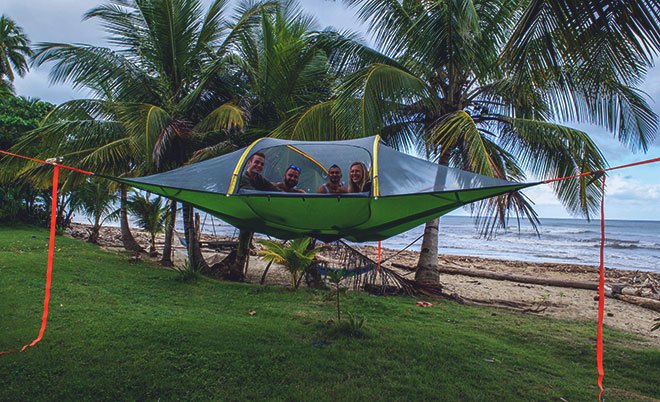
Hammocks with crossbars are good for relaxing in the country or at a campsite. For travel there are models “without extra poles”. The main material is durable fabric with water-repellent properties. These can be classic linen, cotton, or lightweight synthetic materials with increased strength.
Hanging beds also differ in design features. Some (ascetic type) are presented in the form of a light, even canvas, others are endowed with many additional details: pockets, insulation, and other improvements.
Attention! Do not place hammock tents near the roadway or dangerously close to dead trees. The recreation area should not be blown by winds.
Advantages and disadvantages
The same thing can be perceived in different ways: someone loves green apples and praises them, while others like overripe fruits and will never look in the direction of “green”.
So it’s reckless to say clearly which qualities of a hammock-tent are advantages, and which ones, on the contrary, are reckless. Anyway, everyone will choose the characteristics according to their preferences. We only focus on the best and not the best qualities of products.
Pros:
- weight up to 1.6 kg (a win-win option for minimalist tourists, fragile women and children);
- compactness (takes up little space when folded);
- no need to bother with preparing, leveling, or insulating the surface (two stable supports for hanging are enough);
- quickly installed;
- It is very comfortable to sleep in a sleeping bag with an awning;
- not a single insect or reptile will penetrate into a hammock with a mosquito net;
- in case of an unforeseen overnight stay in the forest, two trees are enough to hang a hammock (there is no need to clear the sleeping area from cones, sticks or stones, as is the case with a regular tent);
- You can make a hammock from a regular awning by stretching it between trees or other supports.
Disadvantages:
- a camping hammock is designed for one or two people;
- in case of bad weather, you will have to forget about comfortable accommodation;
- In winter, a backpacking hammock is colder than a ground-based winter tent.
German raincoat Bundeswehr Zeltbahn 31
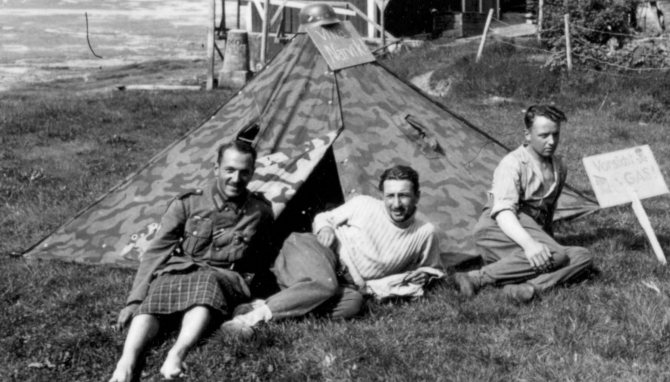
A shelter for several people from German raincoats can be built much faster
The German-made product of the 1931 model, which was in service with the Wehrmacht and was made of waterproof cotton gabardine, is distinguished by its triangular shape. It replaced the earlier quadrangular equipment models. The new products had camouflage colors in different shades: one side of the cloth was darker, and the other was lighter.
German raincoats could also be combined into panels and used to build large shelters for soldiers. Now similar models are found among collectors; reed-green and light bronze raincoats issued for the troops stationed in North Africa are considered of particular value. German models differed from Soviet ones not only in shape:
- The size of the panel is 203 by 250 cm;
- On each of the short sides there were 12 buttons with loops;
- The underside had 6 small rings and the same number of button loops.
During World War II, the Germans often built large shelters with 16 seats from individual raincoats. For this purpose there were special bags with a set of accessories.
Options for using universal army equipment

You shouldn’t think that a soldier’s raincoat will save you from pouring rain; for such cases you need rubberized fabric
Dense and lightweight tent fabric makes it possible to use this invention for various needs:
- Blackouts. The structure of the material does not allow the sun's rays to pass through, from which you can hide in the summer. At night, under the tarpaulin, the light of a flashlight or the light of a match or cigarette is not visible, which can reveal the presence of a person to an outside observer or an animal. In domestic conditions, door and window openings are covered with tarpaulins;
- Carrying. There is no need to explain that an accident can happen to anyone on a hike, and your comrades will have to quickly deliver the victim to a hospital or first aid station. The dimensions and density of the material can easily support the weight of an average person; in extreme cases, the cloth is used as a drag;
- Blanket or bedding. The level of thermal insulation makes it possible to use a raincoat tent in this capacity. Many lie down on one part and cover with the other;
- Tent. If there is no desire to make a full-fledged shelter, then the panel is stretched between two trees and secured with eyelets;
- Cape from bad weather. In the army, these products are most often used this way. It is enough to pull out one lace and tie the second one in the neck area. To make a hood, you need to pull out both laces.
A regular raincoat is not waterproof and can only withstand light rain - this is one of its main disadvantages. To protect against rainfall, the officer version is used, which has rubberized fabric with a high level of waterproofing, but it is not multifunctional.
Despite the variety of choices in the modern world of tourist equipment, soldier's raincoats are still very popular among fishermen, hunters and tourists. The combination of low price and light weight makes it a leader in the budget segment.
If you have any questions, leave them in the comments below the article. We or our visitors will be happy to answer them


